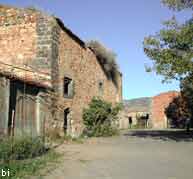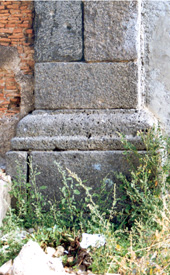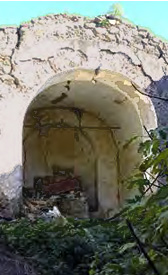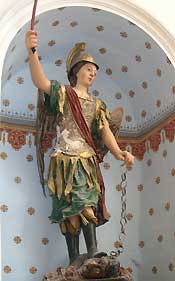| |||||||||||
Placa Bajana farmhouse Church of St. Michael of Placa Bajana
Nowadays of the old building, used as a deposit by an agricultural enterprise, remains only the walls and the characteristic red façade; few decades ago has disappeared also the ancient lava stone portal, literally torn off and stolen at night. We rely, for the church’s description, to the words of the historian of Bronte Benedetto Radice. “The little church is located alongside a feudal, towered castle, once, in Troina’s territory, which belonged to Margherita Buglione. Looks over the Ricchigia, wherein other small churches were and listen to the roar of the Simeto when comes down swollen by the melting of the snows. The façade with the pyramidal pediment in its rustic and symmetric simplicity, worked as mosaic with small pieces of reddish brick and roof tiles lokks like the demure face of a modest countrygirl; certainly is more poetical than a church adorned with superior marbles and architecturally sumptuous. I think it dates to the XIII century.
The shelter was safer in the castle jail, of which can still be seen the gates. “The church has on its front a square 54.13 meters long and 13.80 meters wide. Has only one marble altar dedicated to the Annunciation. The picture seems work of the XVI century. It shows Our Virgin Lady greeted by the Angel, above there is the Eternal Father, surrounded by small cupids; below is the Archangel Gabriel; a cherub offers a lily to the Virgin, that looks like a mature girl. The S. Michele statue, titular of the church, when the hamlet joined Bronte in 1692, was brought in the Main church and placed in a niche alongside the chapel of the SS. Sacramento. Next to the church there is a small cemetery. Having been Placa Bajana a hamlet of Bronte, the archpriest is also the parish priest of Placa Bajana. Up to 1720 many deceased were still buried in this cemetery and that makes us suppose that even after the union many settlers stayed there. On the church’s bell, not used for over 3 centuries to call the faithful anymore, can be read the date of 1631 and the name of D. Ferdinando Toledo, marquis of Floresta, baron of Placa”.
Fifty years earlier, another historian from Bronte, Gesualdo De Luca, instead wrote that «in the Placa Bajana there is a Church dedicated to St. Michael, and on all feast days the Holy Mass is celebrated there for the settlers of the fief. There is no longer any question of administering the Sacraments there, because entire families no longer live there.» Although the church - writes Bruna Pandolfo remembering Radice - "today is in a state of abandonment and degradation, it must be imagined in its splendor, when it was adorned by the altar "of Bardiglio marble dedicated to the Annunciation", embellished by a painting presumably from the 16th century in which "the Virgin is painted greeted by the Angel, above is the Eternal Father, with groups of cherubs around her; below is the archangel Gabriel; a cherub presents a lily to the Virgin, who has the appearance of a mature young woman" and enriched by the statue of St. Michael transferred to the Mother Church in 1692". | |||||||||||
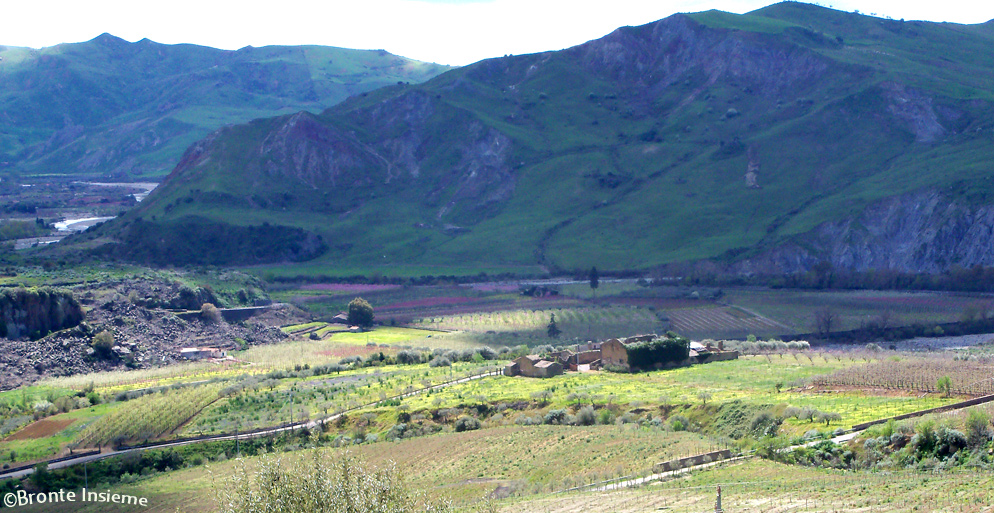 | ||||||||||
| ||||||||||
| ||||||||||
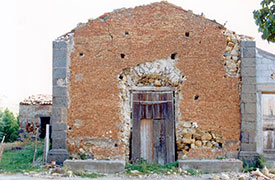 The S. Michele church of Placa Bajana or Placa Tower was located at few kilometres from Bronte, in the ancient
The S. Michele church of Placa Bajana or Placa Tower was located at few kilometres from Bronte, in the ancient 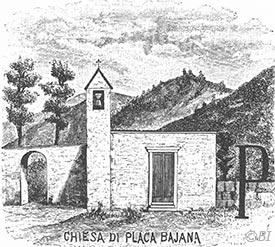 Over the door lintel, sculptured in a square tile of white stone there is written: Ecclesiastic immunity does not apply here. During those iron times this little church didn’t enjoy the right of sanctuary for criminals.
Over the door lintel, sculptured in a square tile of white stone there is written: Ecclesiastic immunity does not apply here. During those iron times this little church didn’t enjoy the right of sanctuary for criminals.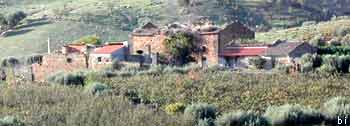 Radice concludes by writing that «the church now serves (1928, the time of publication of the book, ed.) as a warehouse.»
Radice concludes by writing that «the church now serves (1928, the time of publication of the book, ed.) as a warehouse.»